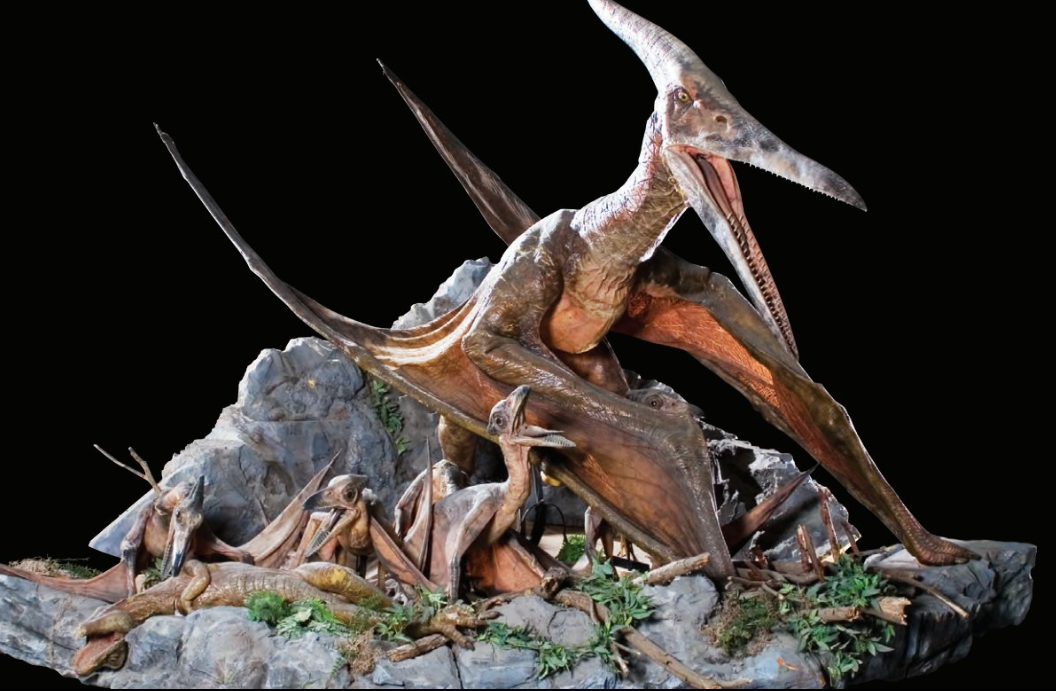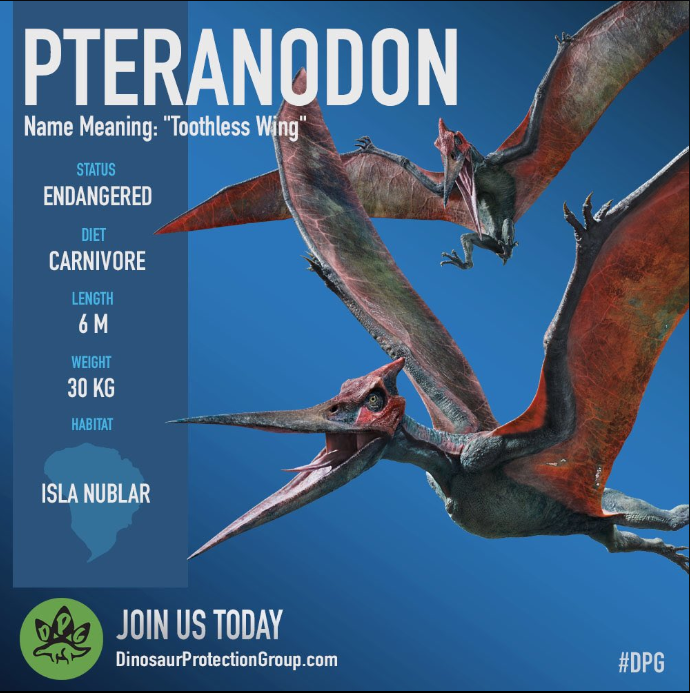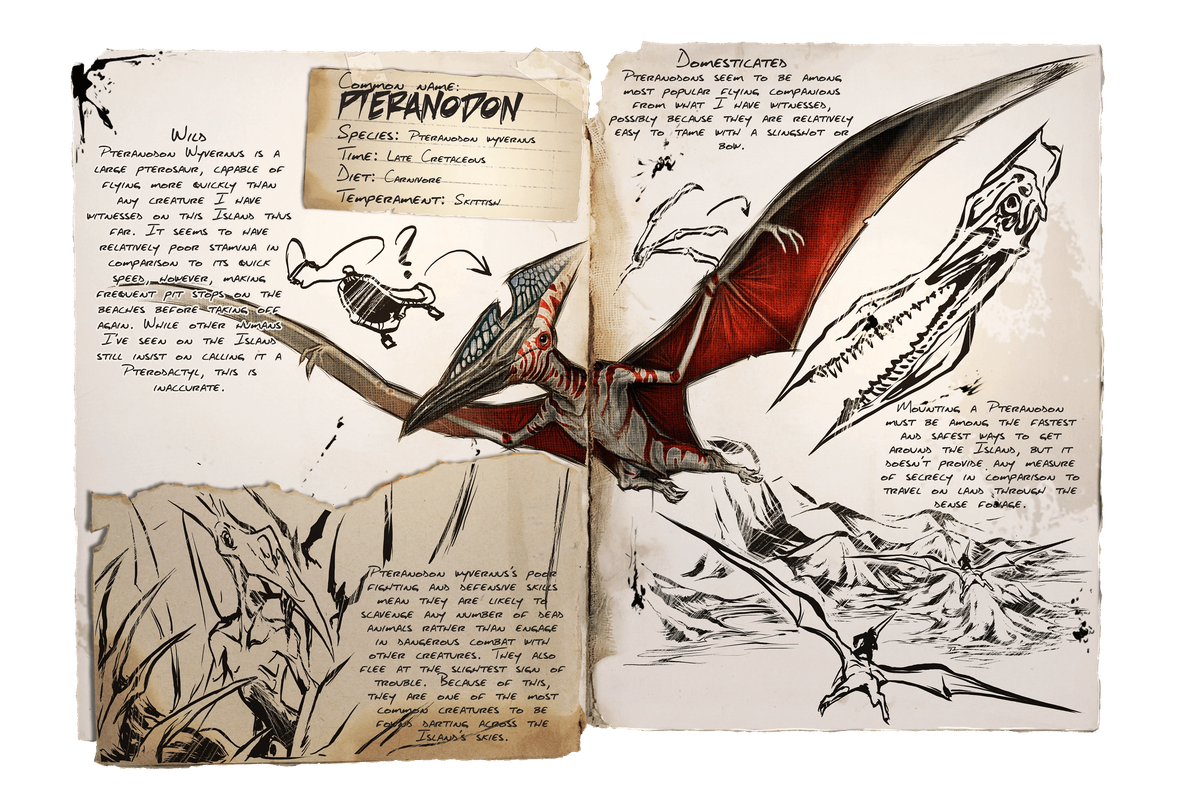Pteranodon
Teh-ran-oh-donName meaning: Toothless Wing
Time Period: Coniacian to Campanian (Late Cretaceous) 86-84.5 Mya
Locations:USA-Niobrara Formation/Pierre Shale Formation
Taxonomy: Pterosauria-Pterodactyloidea-Pteranodontidae
Subspecies: P. longiceps
Characteristics ~ ~ ~ ~
Pteranodon was one of the most sexually dimorphic animals in the fossil record. Males had 18-foot wingspans and weighed around 75 pounds, while females only had 10-foot wingspans and weighed around 45 pounds. In a standing position males would be over twice the height as the females. Males also had large crests extending from the back of their skull; females only had a small half-circle crest on their heads. It’s assumed that Pteranodon may have a polygamous social structure with females greatly outnumbering males and the males had to compete for breeding rights over groups of females like Elephant Seals. Pteranodons were great swimmers since their wings covered most of their bodies. Pteranodon has a 3 fingered hand with a fourth wing finger extending, holding the wing membrane called the brachiopatagium. A bone called the pteroid above the arm supported a smaller wing above the arm called the propatagium. These wings could be folded backwards so the animal could walk quadrupedally and perform a quad launch, a takeoff to flight by pushing off the ground with its arms and legs. They also helped the animal swim, Pteranodons were great swimmers since their arm muscles were already strong from flying. Pteranodons mostly lived in and around the Western Interior Seaway, an ocean that divided North America into two continents: Laramidia and Appalachia. Mostly eating fish


History & Fossils ~ ~ ~ ~
Pteranodon was found by Othneil Charles Marsh in 1871 before the bone wars. Holotype specimens YPM 1160 and YPM 1161 were broken wing bones and teeth. From this Pteranodon was thought to be another species of Pterodactylus, a smaller pterosaur with teeth in its beak called Pterodactylus oweni. But the teeth found with Pteranodon were actually from the fish Xiphactinus. In 1876, a small and large skull were found and noticing the differences, like a lack of teeth from Pterodactylus, P. oweni was named Pteranodon (The toothless wing). The two skulls got their own species P. occidentalis for the smaller one, and P. ingens for the larger one and later a medium-sized one named P. longiceps. Pteranodon has been a wastebasket taxon for a long time; all pterosaurs without teeth were assigned to the name Pteranodon. Leading to many now invalid species like P. comptus, P. nanus, P. nanus Pteranodon Sternbergi had a more upright, curved beak and a different upright crest on its head, and is now considered its own species: Geosternbergia



Media Deptictions ~ ~ ~ ~
Jurassic Franchise Pteranodon had a starring role in Jurassic Park 3 and a brief cameo at the end of the Lost World. In Jp3 it lives in a massive abandoned aviary with a river stretching through it likely supplying the animals with their food. Pteranodon picks up a kid with its feet and takes it to its young to eat. Pteranodon would not be able to do this since the kid weighs twice the amount as a Pteranodon; and it had plantigrade feet like ours meaning its heels touched the ground and it couldn't grasp things. The Pteranodon in JP3 are males and a lot larger than their average size. While the Pteranodons for Jurassic World onward are females that have the reduced crest, but aren't their accurate size more so the size of typical males.


Ark Survival Evolved

